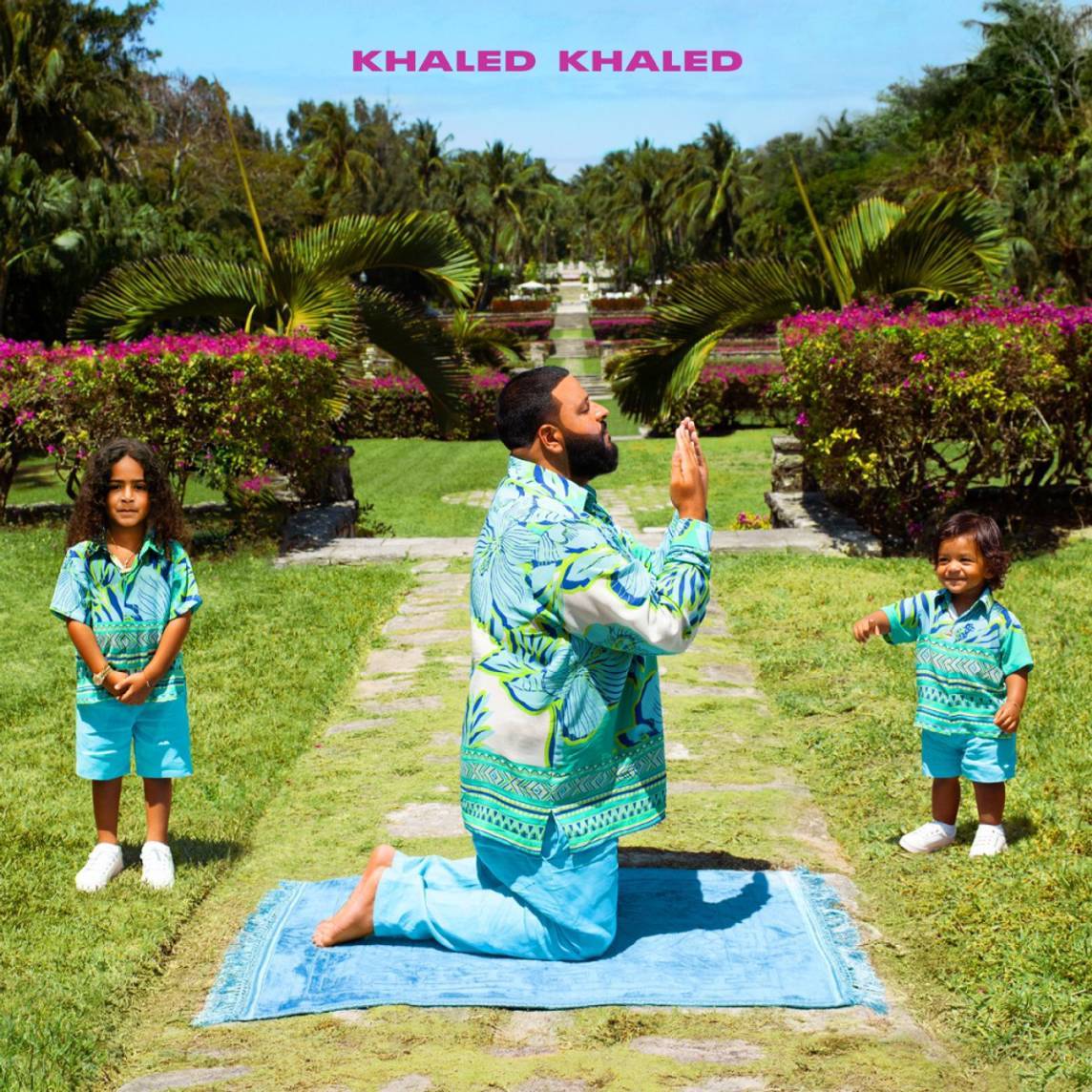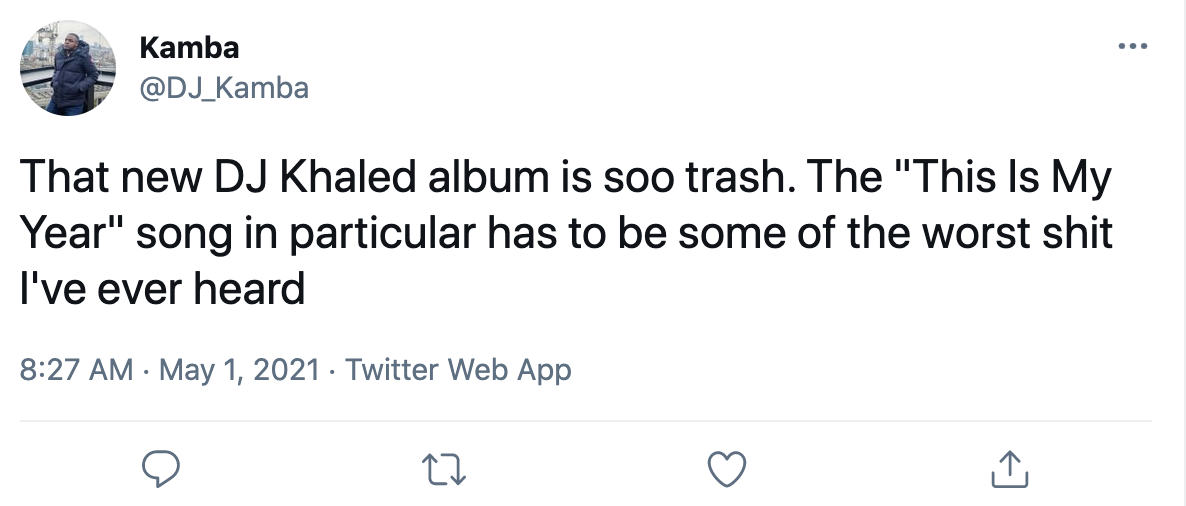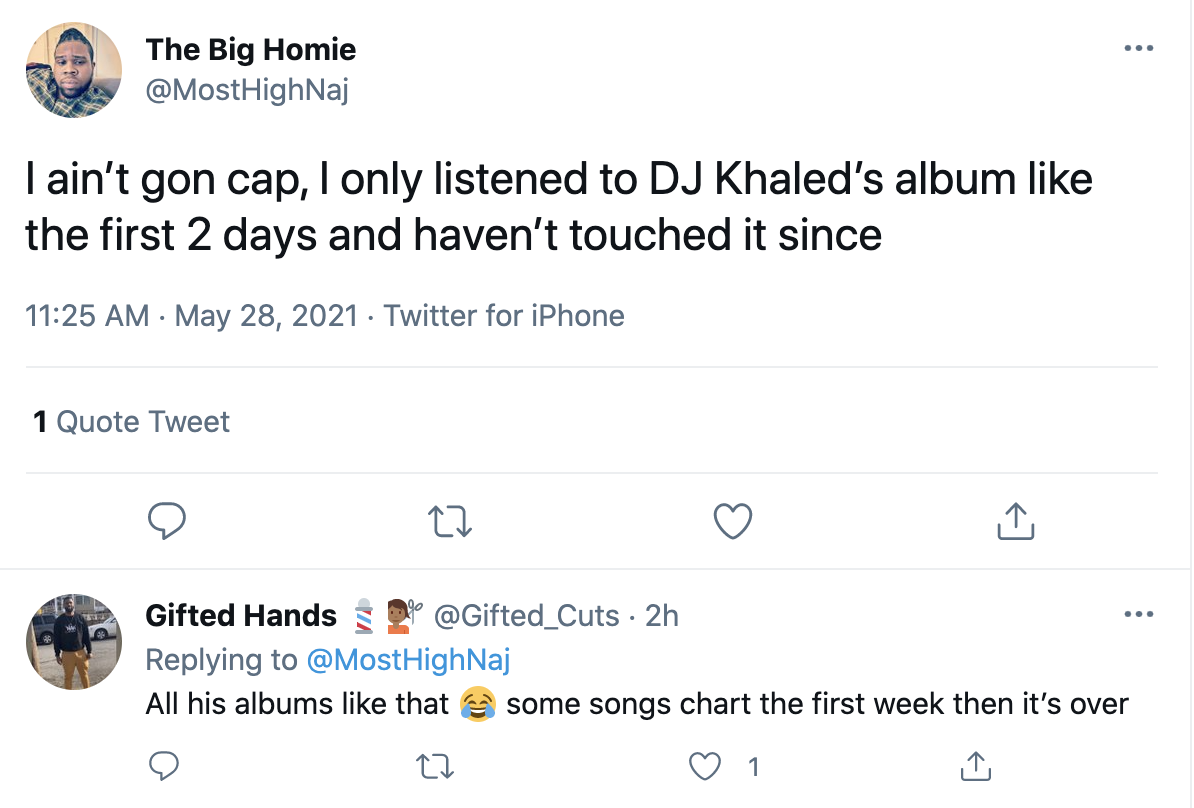
DJ Khaled's 'Khaled Khaled' Album Proves He's NOT Hip Hop's Quincy Jones
 67
67  68
68 The protocol for new DJ Khaled albums is as follows: expect nothing, delight in finding a few songs which clear that floor-high bar, tell your friends that Khaled is back, and forget about it for the rest of your life.
His most recent effort, Khaled Khaled, falls directly in line with the rest of the world’s most profitable yet forgettable discography.
Ironically it was longtime friend and collaborator Fat Joe — not Khaled — who spirited the album’s hyperbolic lure when he proclaimed the We The Best exec to be “the Quincy Jones of Hip Hop.†(A title so egregious, 9th Wonder — who has credits on the album — had to break fourth wall and clarify things.)
2019 was the year DJ Khaled’s joie de vivre shell cracked for the first time. After Tyler, the Creator’s Igor edged out its Khaled contemporary, Father of Asahd for the week’s No. 1 album, rap fans heard disturbing accounts of Khaled’s tantrums and mistreatment of his employees.


One might think that failure would motivate such a man to truly work on his craft, to breathe fire into his soulless album-building machine, to do literally anything different. Unfortunately, that does not happen on this self-titled release (his twelfth in total). Instead, he seems to have doubled down on his factorial approach to music. Every choice he makes in curating, designing, and marketing his albums is solely based on what market research tells him will sell.
That said, of the songs are simply too well-designed to fail, such as thundering “Every Chance I Get,†a mesmerizing taste of what we can expect from the upcoming Lil Baby + Lil Durk collaborative tape. Another highlight, “Let It Go,†pairs proud first-generation immigrants 21 Savage and Justin Bieber on a sunny pop banger that flows as though from a glacial spring. And “Body In Motion†answers the burning question of what DaBaby and Roddy Richh’s “ROCKSTAR†would sound like if Lil Baby and Bryson Tiller were swapped out for the lead artist. Still a pleasant experience, originality be damned.
Then come the gimmicks. Two pre-existing Drake singles, “Popstar†and “Greece,†are included on the album for some undoubtedly capitalist reason. The leeching of Eric Clapton’s seminal “Layla†rock riff allows for Lil Baby, DaBaby, Megan Thee Stallion, and Post Malone to resemble low-quality impersonations of themselves, as they are crammed so tightly together on the deflated “I Did It.â€
The now-historic JAY-Z and Nas collaboration, “Sorry Not Sorry,†somehow sounds just as boring as actual history. Given their newfound positioning amongst America’s elite, even the most longtime fan shouldn’t be surprised they have little to offer lyrically than cryptocurrency flexes and multi-million dollar mezzanines.
And finally, the duds. Over half the album has little to no replay value. Cardi B’s “Big Paper†is a carbon copy of her last Khaled collaboration, “Wish Wish.†On paper, the assembling of Diddy, Rick Ross, Big Sean and A Boogie Wit Da Hoodie would translate into something memorable, but the song “This Is My Year†ultimately ends up being another Puff Daddy ad-lib dartboard.
But, when DJ Khaled misses, you don’t register it as a miss. one must commend the market research. (Well researched, DJ Khaled’s team!) On the proverbial rap exam, he is not penalized for wrong answers, only lauded for his hits. At 45 years old, he doesn’t concern himself with album building or longevity, and the listener is duly released from their obligation to consider what they hear.
If you criticize the album, the joke is already on you. No matter how many people agree that DJ Khaled puts little to no effort into his music, that the result is “badâ€, or even “not good,†there will be more who turn on the radio, hear it, and nod their head. (Congratulations are in order for his return to the top of the Billboard 200.)
You can fight the current, but it’s best to bob along. Just leave Quincy Jones outta it.
Repeat Me:
Fan Feedback:





